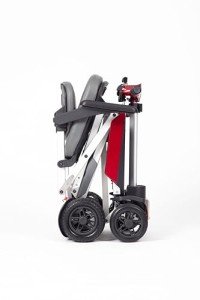Understanding Mobility Aids: Enhancing Independence and Quality of Life
As society continues to age and individuals progressively seek methods to preserve self-reliance, the need for mobility aids has never ever been more important. Mobility aids, which encompass a variety of devices developed to help people with strolling or walking around, play an essential function in promoting mobility, enhancing safety, and improving overall quality of life. This article will explore the numerous kinds of mobility aids, their benefits, factors to consider for choice, and answer some regularly asked questions.
Kinds Of Mobility Aids
Numerous mobility aids are readily available, each created to deal with particular needs. The following table summarizes some of the most typical types of mobility aids and their features.
| Kind Of Mobility Aid | Description | Best Suited For | Key Features |
|---|---|---|---|
| Walking canes | A handheld stick offering assistance and balance. | Individuals who require very little help. | Light-weight, portable, adjustable height. |
| Walkers | Four-legged frames providing stability. | Those requiring substantial support while strolling. | Foldable, some with wheels, included safety features. |
| Rollators | Wheeled walkers with a seat for resting. | People needing mobility with the alternative to rest. | Brakes, baskets for personal items, adjustable height. |
| Wheelchairs | Chairs with wheels for people with minimal mobility. | Those unable to stroll or needing extensive assistance. | Manual or powered choices, personalized seating. |
| Scooters | Motorized devices for larger distances. | Individuals with restricted endurance but requiring self-reliance. | Various sizes and styles, typically portable. |
| Crutches | Assistance devices placed under the arms or forearms. | People recovering from lower limb injuries. | Adjustable, lightweight, needs upper body strength. |
| Stairlifts | Mechanical devices for moving between floorings. | Users facing obstacles in multi-level homes. | Personalized for different staircases, automated. |
Benefits of Mobility Aids
Mobility aids offer a range of advantages that can considerably enhance the lives of people facing mobility obstacles. Some significant benefits consist of:
- Increased Independence: Mobility aids empower individuals to move easily without depending on others for help, consequently improving their confidence and self-confidence.
- Enhanced Safety: Using mobility aids can decrease the threat of falls and injuries, specifically for older adults or those with balance concerns.
- Improved Quality of Life: By assisting in mobility, people can take part in social activities, go to events, and delight in life more fully, contributing to better emotional and psychological health.
- Rehabilitation Support: After surgery or injury, mobility aids offer essential assistance and stability, assisting in healing and rehabilitation procedures.
- Availability: Many mobility aids are developed to be used both inside your home and outdoors, guaranteeing that people can browse different environments with ease.
Elements to Consider When Choosing Mobility Aids
Picking the proper mobility help requires careful factor to consider of a number of factors, consisting of:
| Factor | Factors to consider |
|---|---|
| User's Needs | Assess the level of mobility required; consider whether the user requires short-term or long-term help. |
| Physical Limitations | Evaluate the user's strength, balance, and coordination to determine the best kind of aid. |
| Setting | Think about the primary environments where the aid will be used, such as home, outdoors, or specific surfaces. |
| Weight and Portability | Guarantee that the selected device is manageable regarding portability and storage, especially for outside use. |
| Spending plan | Mobility aids been available in a variety of costs; consider insurance coverage and readily available financing choices. |
| Adjustability | Choose aids that can be changed for height and convenience to accommodate development or changing requirements. |
Regularly Asked Questions About Mobility Aids
1. How do I know if I need a mobility aid?
Lots of elements can signify the requirement for a mobility aid, such as trouble walking or balancing, tiredness while standing, or a current surgical treatment affecting mobility. Consulting with a health care expert can supply guidance tailored to individual requirements.
2. What kinds of mobility aids are covered by insurance coverage?
Coverage varies between insurance providers, but many offer alternatives for durable medical equipment, which generally consists of wheelchairs, walkers, and some kinds of canes. Contact your insurance coverage company for specific coverage info.
3. Can mobility aids be used outdoors?
Yes, numerous modern mobility aids are designed for outdoor use. My Mobility Scooters , scooters, and some walkers are geared up with features for stability and ease of usage on different surface.
4. How do I keep my mobility aid?
Routine maintenance involves inspecting for any wear and tear, making sure that parts such as wheels, brakes, and frames are functioning correctly, and cleaning the devices as needed. Following the manufacturer's standards is essential for security.
5. Is there a threat of becoming based on mobility aids?
While some users may become reliant on mobility aids, they are created to promote independence and mobility. Slowly using a mobility aid can improve self-confidence and aid maintain physical strength and coordination.
Mobility aids are indispensable tools that empower people to get rid of physical challenges, promoting self-reliance and improving quality of life. By comprehending the different types of mobility aids readily available, their benefits, and important aspects for consideration, families and caregivers can make informed decisions that best fulfill the requirements of their enjoyed ones. With the right support, those with mobility obstacles can lead fulfilling and active lives, complimentary to check out the world around them.

